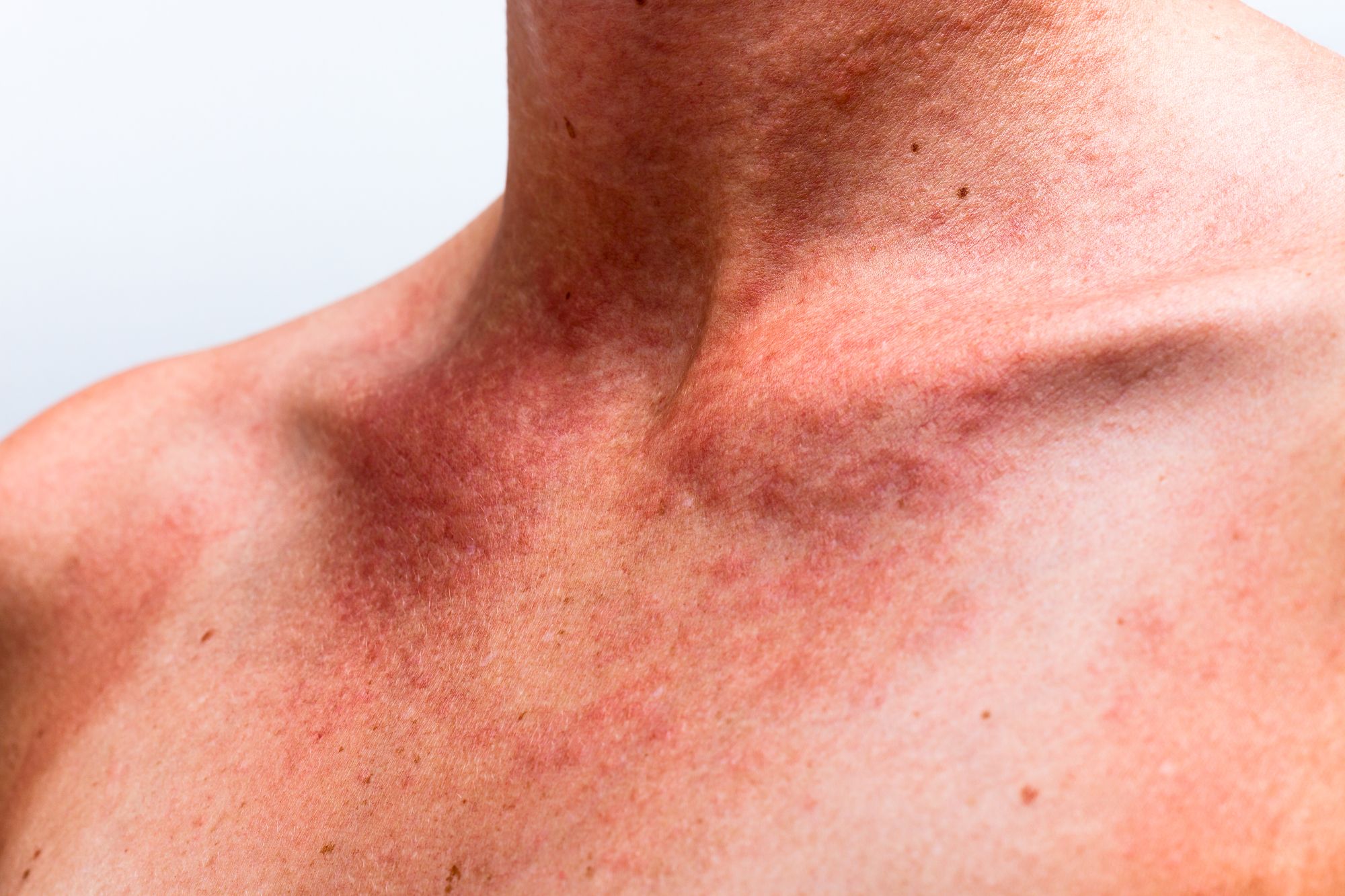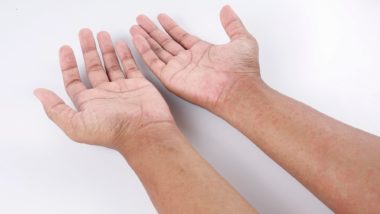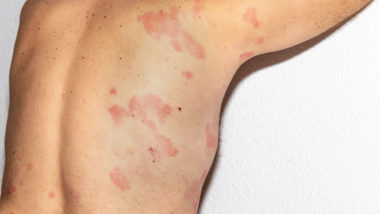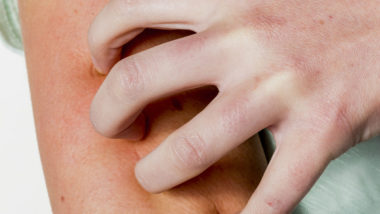Top Class Actions’s website and social media posts use affiliate links. If you make a purchase using such links, we may receive a commission, but it will not result in any additional charges to you. Please review our Affiliate Link Disclosure for more information.
DRESS syndrome is a serious drug allergy that can occur two to six weeks after a patient has begun taking the offending medication. DRESS stands for Drug Rash with Eosinophilia and Systemic Symptoms.
What Causes DRESS Syndrome?
Almost any medication can potentially cause DRESS, but anti-seizure drugs such as Lamictal tend to be more apt to cause this serious allergic reaction. Other drugs that may cause DRESS include other anti-convulsants, the gout medication allopurinol, antibiotics, and antiretrovirals.
What Are the Usual Symptoms of the Condition?
DRESS may present with rash, fever, swollen face, and enlarged lymph nodes. The kidneys and liver are prone to injury when DRESS progresses. A blood test often reveals a remarkably high level of eosinophils, which are a type of white blood cell associated with allergic reactions.
Can DRESS Syndrome Be Fatal?
A 2017 article in the International Journal of Molecular Sciences states that DRESS syndrome has a mortality rate of about 10 percent.
 What Can Be Done if I’m Diagnosed with DRESS Syndrome?
What Can Be Done if I’m Diagnosed with DRESS Syndrome?
Under a doctor’s care, the patient will be monitored as the offending medication is withdrawn. Once the damaging medication has been identified and withdrawn, a patient’s immune system dysfunction usually continues for several weeks. Most patients improve with the help of oral or intravenous steroids, such as prednisone.
Is Hospitalization Necessary to Care for Someone with DRESS?
Yes, hospitalization is required because the severity of the visible rash doesn’t necessarily coincide with the severity of the adverse effects on internal organs.
What Makes a Person at Higher Risk of Such a Severe Allergic Reaction?
According to Medsafe, a person who has a first-degree relative who has suffered from DRESS has a 25 percent greater chance of experiencing the syndrome.
How Many People Experience DRESS Syndrome?
It’s a rare reaction but it is always serious. In 2018, the American Academy of Allergy Asthma & Immunology published an article about a study of 69 DRESS syndrome cases out of 538 recorded cases of hypersensitivity reactions. Of the DRESS patients, 29 incurred liver injury, 29 incurred kidney injury, and 11 suffered from both kidney and liver injuries. Two patients died in the hospital of sepsis, which is a full-body blood infection.
The 69 patients were in the hospital for a median of nine days.
Of all the cases, 74 percent of the reactions were traced to antibiotics, particularly vancomycin, which was found to blame in 40 percent of the instances. Anti-convulsants such as Lamictal were the culprit in 29 percent of the patients, but nearly half of the DRESS patients – 45 percent – had been taking two or more medications that could have been responsible for the development of the condition.
What Are Other Reactions That Resemble DRESS?
Other severe allergic reactions include Stevens Johnson Syndrome (SJS), which causes a dangerous rash and blistering of the skin and mucous membranes on over 30 percent of the surface area of the body.
Toxic Epidermal Necrolysis (TEN) is an advanced form of SJS that includes skin and mucous membrane blistering covering more than 30 percent of the body.
Cleveland Clinic Center for Continuing Education explains that DRESS syndrome can be distinguished from other drug reactions because it has a long latency period. Whereas some allergic or adverse reactions to a drug occur quite quickly after a patient begins to take a drug, DRESS manifests two to three weeks after a patient begins to take a drug.
Though the condition emerges later than other allergic reactions — once the patient has been taking a drug for two to three weeks — DRESS typically manifests the first time that a patient takes an offending drug. This can also be helpful in distinguishing DRESS from another adverse reaction.
Otherwise, the condition is reportedly quite hard to diagnose. This challenge exists because of the range of ways in which the condition can manifest, both with lesions, a rash, and damage to internal organs. These conditions may be misattributed to something else, making diagnosis challenging.
Cleveland Clinic Center explains that there are specific criteria for diagnosing DRESS: If a patient meets one of three requirements, including acute rash, hospitalization, and possible drug-related adverse reaction, as well as three systemic occurrences — fever, lymphadenopathy, hematologic abnormalities, or issues with at least one internal organ.
Fever and rash are the most common DRESS symptoms, says Cleveland Clinic Center. Some 85 percent of DRESS patients experience fever, while 75 percent develop a rash. These characteristics can help medical professionals identify DRESS.
Is Lamictal Associated with Any Other Bad Reactions?
In addition to DRESS syndrome, SJS or TEN, Lamictal may cause blurred vision, chest pain, sleeping problems, confusion, joint pain, head pain, and fatigue.
If you or a loved one developed a Lamictal rash or other serious Lamictal side effects, you may qualify to pursue compensation by filing a Lamictal lawsuit. See if you qualify by filling out the short form on this page. It’s absolutely free to participate, so act now!
ATTORNEY ADVERTISING
Top Class Actions is a Proud Member of the American Bar Association
LEGAL INFORMATION IS NOT LEGAL ADVICE
Top Class Actions Legal Statement
©2008 – 2024 Top Class Actions® LLC
Various Trademarks held by their respective owners
This website is not intended for viewing or usage by European Union citizens.
Get Help – It’s Free
Join a Free Lamictal Lawsuit Investigation
If you believe your diagnosis was caused by Lamictal, you may be entitled to compensation by filing a Lamictal lawsuit. Learn more by filling out the form on this page for a free case evaluation.
An attorney will contact you if you qualify to discuss the details of your potential case.
PLEASE NOTE: If you want to participate in this investigation, it is imperative that you reply to the law firm if they call or email you. Failing to do so may result in you not getting signed up as a client or getting you dropped as a client.
Oops! We could not locate your form.


 What Can Be Done if I’m Diagnosed with DRESS Syndrome?
What Can Be Done if I’m Diagnosed with DRESS Syndrome?










